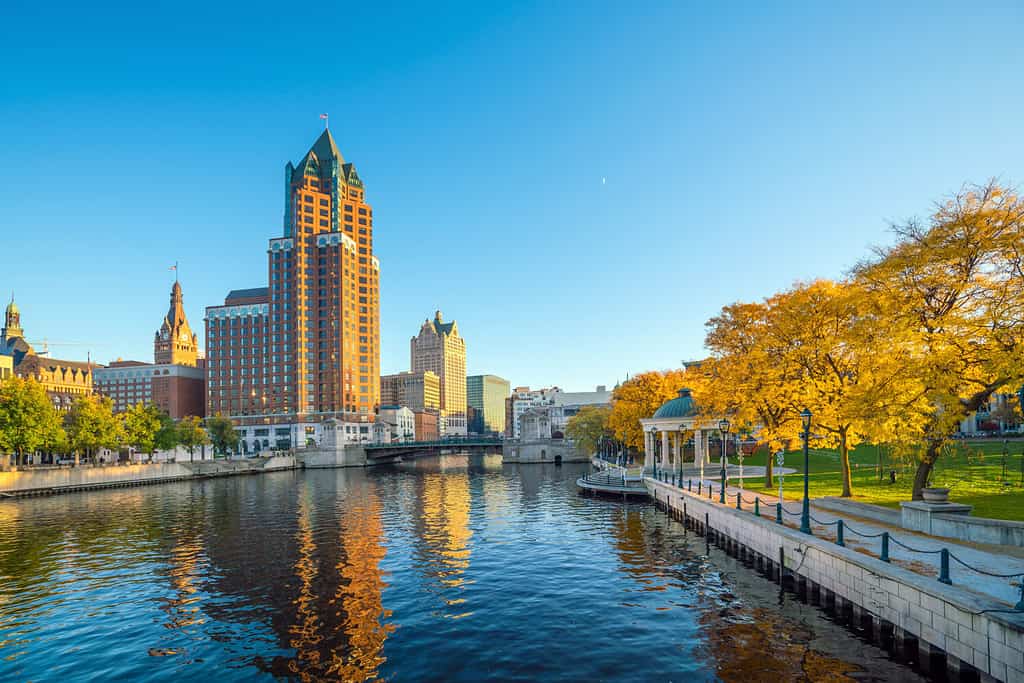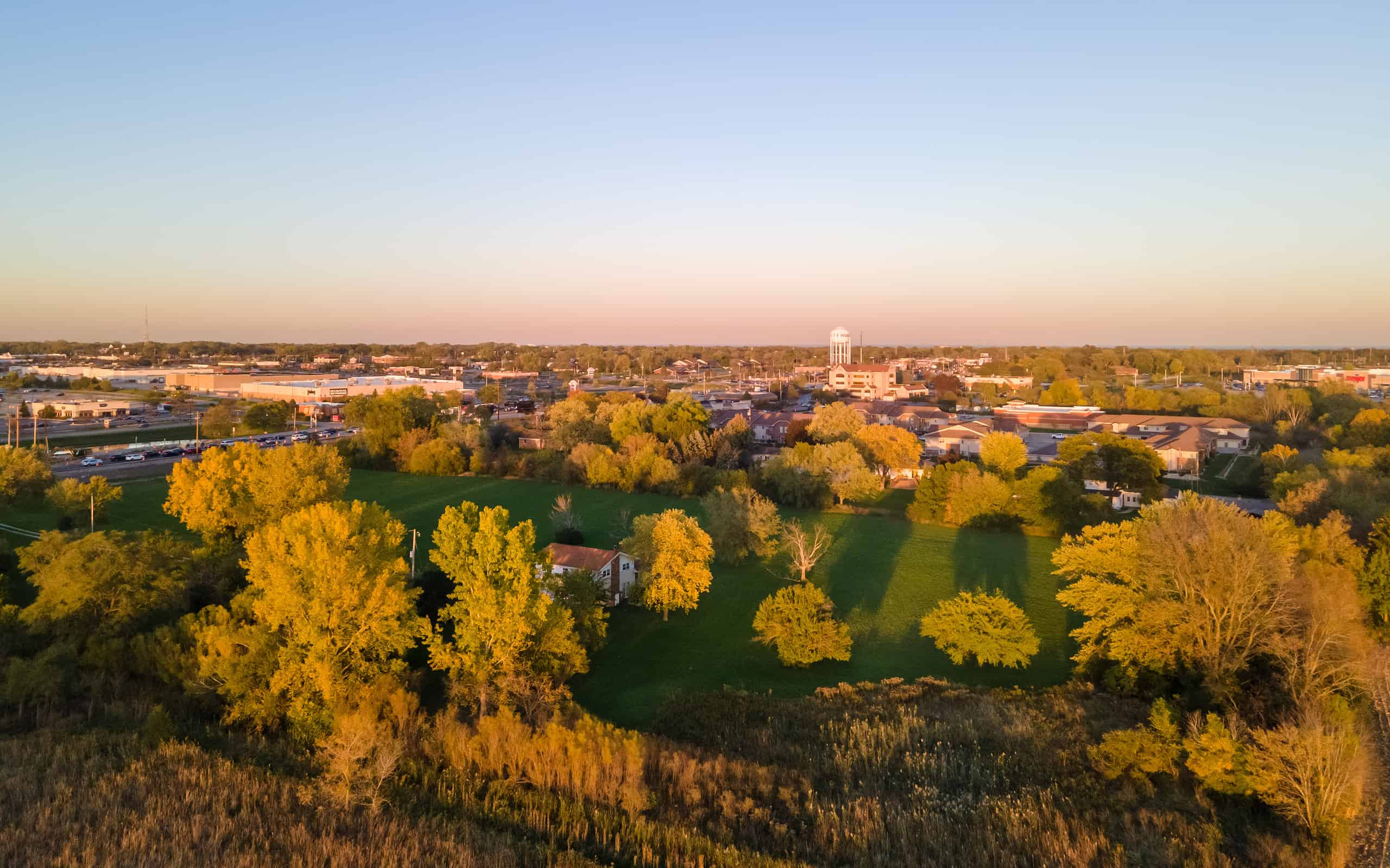Wisconsin is a state that is often celebrated for its natural beauty and Midwestern charm. However, it also deeply grapples with the pressing issue of poverty, which affects a significant portion of its population. The poverty in the state is diverse, affecting both urban areas and rural communities, as well as various demographic groups. While Wisconsin has a strong economy as well as thriving industries, the reality of poverty persists. It casts a shadow over the lives of many residents.
Poverty in Wisconsin
One of the defining aspects of poverty in Wisconsin is its geographical distribution. Urban centers like Milwaukee and Racine have to deal with concentrated poverty. This can be seen in neighborhoods where a substantial percentage of residents live below the poverty line. In these areas, access to quality education, healthcare, and employment opportunities can also be limited. This creates self-perpetuating cycles of economic hardship.
Rural poverty is another significant facet of Wisconsin’s struggle. Remote communities often face distinct challenges, including limited job prospects, inadequate infrastructure and reduced access to essential services. Agricultural communities, once the backbone of the state’s economy, have encountered economic shifts that have left some residents poor.
The impact of poverty extends beyond just economic concerns. It also affects individuals’ access to education, healthcare, and housing, as well as their overall quality of life. Poverty can be particularly harsh on children. This is because as mentioned earlier, it can impact their education and future prospects. Furthermore, it strains healthcare systems. This is because individuals in poverty may delay seeking medical care due to financial constraints, leading to long-term health issues and disparities.
There have been many efforts to address poverty in Wisconsin. These involve various groups of people, including government agencies, nonprofit organizations, and community leaders. Initiatives focusing on workforce development, affordable housing, access to quality education and healthcare equity are some important ones that help alleviate the hardships faced by those living in poverty.
Lac du Flambeau: Wisconsin’s Poorest Town

1906 Government Boarding School on WI Hwy 47 in Lac du Flambeau, WI.
The small town of Lac du Flambeau in northern Wisconsin is a community with a rich cultural heritage as well as a deep connection to its natural surroundings. However, beneath the serene surface is this stark reality. It is the poorest town in Wisconsin.
Lac du Flambeau is a town situated in Vilas County, Wisconsin. It is part of the larger Lac du Flambeau Band of Lake Superior Chippewa Indians Reservation, and its residents have a deep cultural heritage tied to the Ojibwa tribe. While the town has a beautiful natural environment, surrounded by lakes and forests, it also grapples with severe economic challenges that have earned it the unfortunate distinction of being the poorest town in the state of Wisconsin.
In this article, we will explore Lac du Flambeau’s historical context, the factors contributing to its economic struggles, the efforts being made to address these challenges, as well as the resilience of its community members.
Historical Context
To understand Lac du Flambeau’s present-day economic situation, it is crucial to examine its historical context. The town’s history is deeply connected with that of the Lac du Flambeau Band of Lake Superior Chippewa Indians, whose ancestors have inhabited the region for centuries.
The Lac du Flambeau Band signed treaties with the U.S. government in the 19th century, ceding vast tracts of land in exchange for reservations and specific rights. These treaties have had a profound impact on the tribe’s land ownership, self-governance, and economic opportunities. Over the years, the tribe faced economic displacement due to factors like land loss, the decline of traditional hunting and fishing economies. This displacement has contributed to economic challenges for the community.
In the late 20th century, the tribe turned to gaming as a source of revenue. The Lac du Flambeau Band opened a casino, which has been one of the primary economic drivers for the tribe and the town. However, gaming revenue has not been sufficient to lift the entire community out of poverty.
Demographics
Understanding the demographics of Lac du Flambeau is also crucial to grasping the challenges faced by the town’s residents. As of the 2020 U.S. Census, Lac du Flambeau had a population of approximately 2,843 residents. This includes both tribal members and non-tribal members.
Lac du Flambeau also consistently reports high poverty rates, with a significant portion of its population living below the federal poverty line. Factors contributing to these rates include limited employment opportunities, low wages, and economic disparities.
Educational attainment levels in Lac du Flambeau are lower than the state average. Limited access to quality education and resources can also perpetuate the cycle of poverty. Housing conditions can also be subpar, with many residents living in overcrowded or inadequate housing. All of this contributes to the town’s overall quality of life challenges.
Economic Challenges
Several factors contribute to Lac du Flambeau’s status as the poorest town in Wisconsin. The town’s economic diversity is limited. The town’s economy is heavily reliant on a few sectors, primarily the casino industry. While the casino has provided jobs and revenue, it hasn’t been enough to fix poverty for all residents.
Lac du Flambeau’s location in a rural area with limited access to larger urban centers can also hinder economic development and job opportunities. There are also transportation challenges in the town. Lack of reliable public transportation can make it difficult for residents to access employment, education, and essential services. Lower educational attainment levels can also limit residents’ access to higher-paying jobs and opportunities for economic mobility.
There are also healthcare disparities and historical inequities in this town. Limited access to healthcare services and health disparities can impact residents’ overall well-being and their ability to work. The historical displacement of the tribe and loss of land have also contributed to the ongoing economic disparities and challenges.

A Stamp printed in USA devoted to Tercentenary of the arrival of French explorer Jean Nicolet at Green Bay, Wisconsin, circa 1934
©AlexanderZam/iStock via Getty Images
Efforts to Address Poverty
Despite facing several economic challenges, Lac du Flambeau has not been passive in addressing its issues. The town has taken several initiatives and efforts to improve the lives of its residents, such as investing in community development, education, healthcare and jobs.
The town and the tribe have pursued community development projects aimed at providing affordable housing, infrastructure improvements, and economic diversification. They have also made efforts to improve educational opportunities for youth, including partnerships with schools and investment in educational resources.
Furthermore, they have made initiatives to improve healthcare access, including tribal health services and partnerships with healthcare providers. They also have programs and partnerships that offer job training and skills development to enhance residents’ employability.
The tribe has also actively worked to preserve and celebrate its cultural heritage. This has created opportunities for tourism as well as cultural experiences that can bolster the local economy.
The Resilience of Lac du Flambeau
Lac du Flambeau faces economic adversity from multiple angles. However, it is essential to recognize the resilience and strength of its community members. The town’s residents, both tribal and non-tribal, are determined to overcome their challenges and create a brighter future for themselves and future generations.
Lac du Flambeau takes great cultural pride in its Ojibwa heritage and seeks to pass down cultural traditions to younger generations. This ensures that their identity remains strong. The town’s close-knit community also creates a sense of belonging and support. The town’s residents come together to address issues and create opportunities for growth all the time. Some residents have also embraced entrepreneurship, starting businesses that contribute to the local economy and offer employment opportunities.
Lac du Flambeau residents and tribal leaders also engage in advocacy efforts to raise awareness about their town’s challenges. They also seek support and resources from local, state, and federal governments. Efforts to improve education and empower residents through new skills are also helping individuals find new pathways out of poverty.
Other Poor Towns in Wisconsin
Wisconsin, like many states in the United States, has several towns and communities facing economic challenges and struggling with poverty. While Lac du Flambeau is the poorest town in the state, there are several other areas grappling with similar issues. This is because Wisconsin is a part of the Rust Belt states, which saw great economic prosperity in the mid-1900s. But these factories soon became outdated and collapsed, leading to a lack of prosperity. Most people in these states are now struggling to find jobs and any form of employment due to lack of industries.
Beloit
Beloit, located in Rock County, has experienced economic challenges due to the decline of its manufacturing sector, which was once a major source of employment. The closure of industrial facilities and factories has resulted in job losses and contributed to economic hardship.
Beloit has also faced persistently high poverty rates, with a significant portion of its population struggling to make ends meet. Limited access to higher-paying job opportunities has hindered economic mobility for many residents.
Superior
Superior, located in the northwestern part of the state, has undergone an economic transformation in recent decades. The decline of traditional industries like shipping and manufacturing has affected the town’s economy. While efforts have been made to diversify the local economy, challenges still remain.
High unemployment rates have also been a persistent issue in Superior. The town has been working with dedication to attract new industries as well as provide job training to address these problems.
Racine
Racine, located along Lake Michigan, has experienced the decline of its industrial base, particularly in the automotive manufacturing sector. The loss of manufacturing jobs has contributed to unemployment and poverty in the area.
Community initiatives in Racine aim towards improving education and workforce development opportunities. They focus on equipping residents with any skills needed for emerging industries.
Janesville
Janesville, located in Rock County, also faced significant economic challenges following the closure of a major General Motors plant. This closure resulted in the loss of thousands of manufacturing jobs and had a substantial impact on the local economy.
Janesville has embarked on efforts to diversify its economy by attracting new businesses and industries to the area. While progress has been made, the town continues to address the aftermath of the plant closure.
Milwaukee

The Milwaukee River has an interesting history. It is a thriving area but certain neighborhoods have higher poverty rates.
©f11photo/Shutterstock.com
While Milwaukee is Wisconsin’s largest city and has a thriving metropolitan area, certain neighborhoods within the city experience high levels of poverty. Factors contributing to urban poverty include limited job opportunities, educational disparities, and social challenges.
Milwaukee has started various community initiatives and organizations dedicated to addressing poverty, improving education, and providing support to vulnerable populations.
Green Bay
Green Bay, home to the Green Bay Packers as well as a diverse economy, still sees poverty within certain neighborhoods. These disparities can be linked to limited access to quality education and employment opportunities.
Access to affordable housing is a key concern in some parts of Green Bay, with some residents facing challenges related to housing costs and quality.
Kenosha
Kenosha, located in southeastern Wisconsin, has undergone an economic transition with the decline of manufacturing industries. Changes in the local job market have impacted residents and contributed to economic difficulties.
However, Kenosha has invested in redevelopment projects to revitalize the community, create jobs, and attract new businesses.
In each of these towns and communities, the specific factors contributing to poverty can vary, but the common themes include the loss of traditional industries, limited access to quality education and job training, and disparities in income and employment opportunities. These areas often rely on community initiatives, economic diversification, and workforce development efforts to address poverty and improve residents’ quality of life.
It’s important to note that while these towns face economic challenges, they also have dedicated community members, leaders, and organizations working tirelessly to address these issues and create positive change. Economic revitalization, education, and job creation efforts are ongoing. Progress is continually being made to uplift these communities and provide residents with opportunities for a brighter future.
Town with Highest Crime Rates in Wisconsin
Sadly, Kenosha has also garnered attention not only for its poverty but also for its relatively high crime rate compared to other communities in the state. It is important to note that crime rates can fluctuate over time, and various factors contribute to these rates.
Crime Statistics in Kenosha

A scenic sunset view over Kenosha in autumn, Wisconsin
©Wirestock/iStock via Getty Images
Kenosha, located in southeastern Wisconsin along the shores of Lake Michigan, has faced several challenges when it comes to crime. While it is not the largest city in Wisconsin, it has experienced higher crime rates compared to some other towns and cities in the state.
Violent crime in the city includes offenses such as homicide, assault, robbery, and sexual assault. Kenosha has reported higher rates of violent crime compared to the state average. Factors contributing to violent crime can include poverty, substance abuse, and social disparities.
Property crime encompasses offenses like burglary, theft, and vehicle theft. Kenosha has also experienced property crime rates that are above the state average. Property crimes in the city can be influenced by factors such as economic conditions and community resources.
Finally, the city also sees a lot of drug-related offenses, including drug possession and trafficking. Both have been a concern in Kenosha. Substance abuse issues can also contribute to property crime and other criminal activity.
Factors Contributing to Crime in Kenosha
Several factors have contributed to the relatively higher crime rates in Kenosha.
Economic Challenges
Economic disparities, including income inequality and limited job opportunities, can contribute to crime. Residents facing economic difficulties may turn to illegal activities as a means of financial supporting themselves.
Education
Educational disparities can also impact crime rates. A lack of access to quality education and resources may lead to lower educational attainment, limiting employment opportunities. When people are unemployed, they might turn to illegal activities in order to make money and sustain their families.
Substance Abuse
Drug and alcohol abuse can also lead to criminal behavior. Substance abuse issues, if left unaddressed, can lead to various crimes, including theft and violence.
Community Factors
Community dynamics, including neighborhood safety and social cohesion, can influence crime rates. Areas with a lack of community engagement and support may be more susceptible to criminal activity.
Law Enforcement and Criminal Justice System
The effectiveness of law enforcement and the criminal justice system in addressing and preventing crime can impact crime rates in any city. Effective community policing and access to social services are therefore crucial components of crime reduction.
Efforts to Address Crime and Improve Public Safety
Kenosha has implemented various initiatives and efforts to address crime and improve public safety within the community.
Community Policing
The Kenosha Police Department has engaged in several community policing strategies that are aimed at building trust between law enforcement and residents. These efforts can enhance communication and cooperation when it comes to addressing crime.
Youth Programs
Initiatives that target at-risk youth can also help prevent criminal activity in individuals from a young age. After-school programs, mentorship, and recreational activities help provide positive outlets for young people, so that they don’t have to turn to crime.
Substance Abuse Treatment
Access to substance abuse treatment and mental health services is also essential in addressing drug-related offenses. Kenosha, therefore, has programs to support individuals struggling with addiction.
Economic Development
Efforts to promote economic development and job creation can help reduce poverty and provide opportunities for residents. By improving the economic prospects of the community, crime rates may decrease.
Collaboration
Finally, collaboration among local government, law enforcement agencies, nonprofit organizations, and community leaders is critical to reduce crime in every single facet of life. Collective efforts can address these root causes of crime as well as improve public safety.

The Wisconsin state flag waving along with the national flag of the United States of America. Wisconsin is a state in the upper Midwestern United States
©rarrarorro/iStock via Getty Images
Final Thoughts
Lac du Flambeau is Wisconsin’s poorest town, but it is a place of contradictions. It is a town with deep cultural heritage and natural beauty, yet it grapples with economic challenges that have persisted for generations.
Despite the obstacles, the town’s residents and tribal leaders are determined to create a brighter future. They are working tirelessly to address issues such as limited economic diversity, geographic isolation, educational disparities, and healthcare disparities.
Lac du Flambeau, therefore, serves as a reminder that addressing poverty requires a comprehensive approach that addresses not only economic factors but also social, cultural, and historical dimensions. Through understanding the challenges and the determined spirit of this community, we gain insights into the broader issues of poverty in rural America and the ongoing efforts to overcome them.
Thank you for reading! Have some feedback for us? Contact the AZ Animals editorial team.







